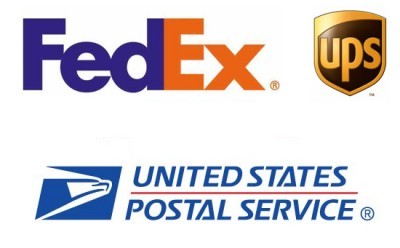
One of the most tedious and painful aspects of eCommerce is dealing with shipping. However, this is one of the most important subjects to cover because eCommerce shipping can make or break your business in terms of profitability. Shipping is a pretty broad subject because it covers everything from shipping cost, what shipping methods are offered, which shipping carriers you use, how your products are packaged for shipping, the process of actually shipping items out, and making sure your shipment tracking numbers get updated into your eCommerce platform(s).
Shipping Cost
Calculating shipping for eCommerce sales can be handled in multiple ways. Keep in mind, there is the cost of shipping for you, then there is the cost to your customer. Your first step is to calculate the actual cost of shipping based on your rates for each shipping carrier (based on the shipping methods and shipping carriers you choose). Once you have your costs figured out, then you have to figure out how you plan to charge your customers for shipping.
- Free Shipping – Just add in the cost of shipping to your product price
- Flat rate shipping – This usually only works if all of your products are the same size and weight or if you use USPS flat rate boxes
- Shipping By Order Total – Again, this only works if your products are the same size and weight or if you use USPS flat rate boxes
- Shipping By Weight & Zone – This is a good method, if you can create an accurate shipping rate table
- Real Time Shipping – This is always the best way to do it but only if your eCommerce platform can handle it
No matter which method you use, just make sure you use dimensional weights when calculating your weight if you use FedEx or UPS.
Shipping Methods
Shipping methods is the combination of shipping carrier and the various shipping options offered, which you want to allow. For example, USPS First Class vs. FedEx Standard Overnight. Ideally you want to offer enough choices so customers can choose an economical shipping method as well as an expedited method such as overnight or 2nd day. Best practice is to offer the economical one by default, but to allow customers the option to upgrade to a more expensive expedited method. Just know the more options you offer, the more complex it is to setup because shipping touches many pieces of your business (eCommerce platform, accounting, operations, etc.).
Shipping Carriers
Picking the right mix of shipping carriers goes hand-in-hand with selecting your shipping methods. Although it is a time consuming process, spending time to properly calculate your shipping costs should be how you determine the shipping carriers and methods you want to offer. For example, if you are lazy and you just say I want to use USPS for everything, you are going to end up paying a lot more money because USPS is usually only cheaper for shipments under one pound. On the other hand, if you go with just FedEx or UPS, you will pay too much on lighter items. Another factor to consider is is destination because different zones maybe cheaper with one carrier vs. another (i.e. HI or AK). Bottom line, you have to do the math and figure out what shipping methods and carriers work best for the type of products you are shipping and where you are shipping them to.
Product Packaging
If you sell products online you have to take product packaging into consideration because at bare minimum you have to ensure your products arrive safely to your customers. However, due to dimensional shipping, product packaging is becoming even more important because the smaller the shipping container, the less you pay for shipping. Make sure you work closely with your director of operations of your warehouse manager to ensure your products are packaged optimally for eCommerce shipping.
Shipping Process
It is important for eCommerce professionals to understand the shipping process because it directly impacts your handling times and your margin for error on fulfilling orders. Another major reason eCommerce professionals need to take this into consideration is scalability. It might be easy to fulfill 40 – 50 orders a day, but what happens when you get to 100 orders a day, 500 orders a day or even a 1,000+ orders a day. Fulfilling orders on-time and accurately is a huge aspects of eCommerce, so you cannot just count on your Operations Director or Warehouse Manager to care about it as much as you do.
Tracking Numbers
Thanks to Amazon, providing tracking numbers in a timely manner to customers is no longer a luxury, it is a required standard; especially if you are selling on marketplaces such as Amazon, eBay, Rakuten or Newegg. Make sure you work closely with your IT department to ensure that your tracking information is updating your eCommerce platforms in a timely manner because most marketplaces required a one business day handling time and they use the tracking number as their method of determining if you made the deadline or not. Don’t just setup an automated process, make sure you have alerts and backup processes in case an update fails.
- COVID-19 Has Forced Many Business To Ask, How Do I Start Selling Online? - May 25, 2020
- Applying AI Technology To Taco Bell - January 25, 2020
- ONWARD 2018 Taco Bell Brand Award - November 11, 2018


One Response
3rosebud
Comments are closed.